William of Occam
description: English Franciscan friar and theologian (c.1287–1347)
26 results
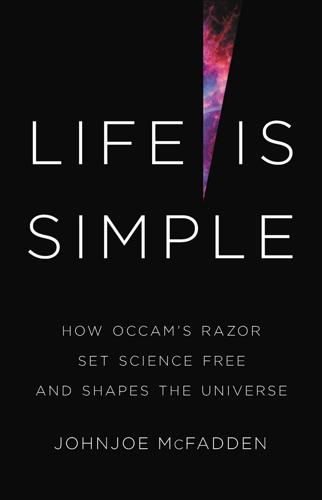
Life Is Simple: How Occam's Razor Set Science Free and Shapes the Universe
by
Johnjoe McFadden
Published 27 Sep 2021
At the end of a long invective against ‘an ignorant man’ who has been rousing the ‘ignorant masses’ against the great philosophers of the past, the ghost of Occam is alerted to the approach of the day by the sounds of street vendors and the ‘venerable shadow disappeared into the air’. This wonderful story, uncovered only in 1983, demonstrates how, by 1380, William of Occam’s philosophy had seeped out of Oxford, Avignon, Paris and Munich, to infiltrate the fast-beating heart of the trecento. How and why Landini became familiar with William of Occam is not clear but there are a number of possible routes. The Tuscan poet Petrarch lived in Avignon while William of Occam was confronting the Pope in the city, and later travelled to Florence and was probably known to Landini. Despite his blindness, Landini also travelled widely and he may have come across Occam’s teachings through an influential textbook on nominalist logic entitled the Perutilis logica (Very Useful Logic) by one of Buridan’s Occamist students, Albert of Saxony, which had been widely copied and circulated among the major centres of learning in Europe including Prague, Paris, Oxford, Vienna, Bologna, Padua and Venice.
…
Escape from Avignon For against the errors of this pseudo-pope I have set my face like the hardest rock… William of Occam, 13296 Late in 1324, just around the time that William arrived in Avignon, his panicked order was gathered in the town of Perugia, not far from St Francis’s Assisi, for an emergency conclave to consider their response to the Pope’s broadside. The meeting concluded with the drafting of a letter affirming the principle of apostolic poverty. The order’s lawyer Bonagratia of Bergamo was charged with taking the letter to Avignon. After arriving in the papal city and delivering the letter he publicly criticised Pope John XXII. William of Occam surely witnessed this event.
…
Further detective work by Duhem and, later, by Ernest Moody (1903–75) followed the tracks of Leonardo’s scholarship across the Channel to the group of medieval English scholars known simply as ‘The Calculators’ as well as to a movement known as the via moderna that had been inspired by William of Occam.6 Rather like the rediscovery of Greek texts in the twelfth and thirteenth centuries, Duhem and his colleagues uncovered an entirely forgotten period of science and he concluded that: ‘In the mechanical work of Leonardo, there is no essential idea that does not come from the geometers of the Middle Ages.’7 The plague that had wiped out the practitioners of the via moderna clearly did not destroy their ideas. FIGURE 8: Dissemination of William of Occam’s ideas through Europe. There is no reason to believe that Leonardo had any special access to the ideas and philosophy of the via moderna in the fifteenth century so it is likely that thousands of other scholars were familiar with Occam’s razor and the science that it inspired.
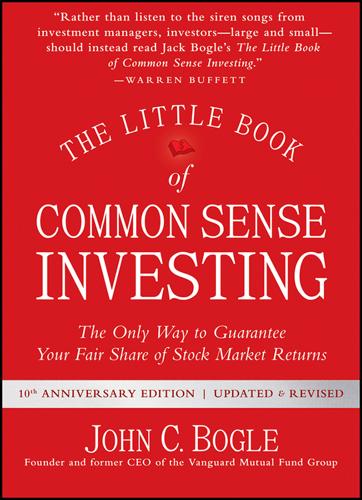
The Little Book of Common Sense Investing: The Only Way to Guarantee Your Fair Share of Stock Market Returns
by
John C. Bogle
Published 1 Jan 2007
Simply by buying a portfolio that owns shares of every business in the United States and then holding it forever. This simple concept guarantees you will win the investment game played by most other investors who—as a group—are guaranteed to lose. Please don’t equate simplicity with stupidity. Way back in 1320, William of Occam nicely expressed the virtue of simplicity, essentially setting forth this precept: When there are multiple solutions to a problem, choose the simplest one.1 And so Occam’s razor came to represent a major principle of scientific inquiry. By far the simplest way to own all of U.S. businesses is to hold the total stock market portfolio or its equivalent.
…
See Chapter 9, “When the Good Times No Longer Roll.” The past record confirms that owning American business through a broadly diversified index fund is not only logical but, to say the least, incredibly productive. Equally important, it is consistent with the age-old principle of simplicity expressed by Sir William of Occam: Instead of joining the crowd of investors who dabble in complex algorithms or other machinations to pick stocks, or who look to past performance to select mutual funds, or who try to outguess the stock market (for investors in the aggregate, three inevitably fruitless tasks), choose the simplest of all solutions—buy and hold a diversified, low-cost portfolio that tracks the stock market.
…
Since 1976, the Vanguard index fund has produced a compound annual return of 12 percent, better than three-quarters of its peer group. Yet even 30 years on, ignorance and professional omerta still stand in the way of more investors enjoying the fruits of this unsung hero of the investment world.” Notes 1 William of Occam expressed it more elegantly: “Entities should not be multiplied unnecessarily.” But the point is unmistakable. 2 Until 1957, the S&P Index included just 90 companies. 3 Full disclosure: Vanguard created the first index mutual fund, tracking the Standard & Poor’s 500 Index, in 1975. The firm also created the first Total Stock Market Index Fund in 1992. 4 You should know that, in establishing a trust for his wife’s estate, Warren Buffett directed that 90 percent of its assets be invested in a low-cost S&P 500 Index fund. 5 This investor paid separately the taxes due on dividends and capital gains distributions. 6 The TSP also offers Roth contributions, which are treated similarly to Roth IRAs for tax purposes.
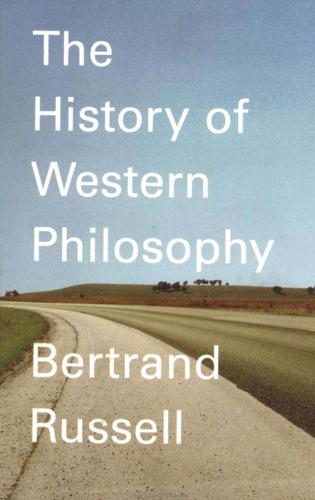
A History of Western Philosophy
by
Aaron Finkel
Published 21 Mar 1945
When the popes became politically subservient to France, the sovereigns hostile to the French king were necessarily hostile to the Pope. This led to the protection of William of Occam and Marsiglio of Padua by the Emperor; at a slightly later date, it led to the protection of Wycliffe by John of Gaunt. Bishops, in general, were by this time completely in subjection to the Pope; in an increasing proportion, they were actually appointed by him. The monastic orders and the Dominicans were equally obedient, but the Franciscans still had a certain spirit of independence. This led to their conflict with John XXII (1316-34), which we have already considered in connection with William of Occam. During this conflict, Marsiglio persuaded the Emperor to march on Rome, where the imperial crown was conferred on him by the populace, and a Franciscan antipope was elected after the populace had declared John XXII deposed.
…
They devoted themselves to reconciling Aristotle and Christ; Albertus Magnus and Thomas Aquinas, both Dominicans, accomplished this task as well as it is capable of being accomplished. The authority of Thomas Aquinas was so overwhelming that subsequent Dominicans did not achieve much in philosophy; though Francis, even more than Dominic, had disliked learning, the greatest names in the immediately following period are Franciscan: Roger Bacon, Duns Scotus, and William of Occam were all Franciscans. What the friars accomplished for philosophy will be the subject of the following chapters. CHAPTER XIII Saint Thomas Aquinas THOMAS AQUINAS (b. 1225 or 1226, d. 1274) is regarded as the greatest of scholastic philosophers. In all Catholic educational institutions that teach philosophy his system has to be taught as the only right one; this has been the rule since a rescript of 1879 by Leo XIII.
…
CHAPTER XIV Franciscan Schoolmen FRANCISCANS, on the whole, were less impeccably orthodox than Dominicans. Between the two orders there was keen rivalry, and the Franciscans were not inclined to accept the authority of Saint Thomas. The three most important of Franciscan philosophers were Roger Bacon, Duns Scotus, and William of Occam. Saint Bonaventura and Matthew of Aquasparta also call for notice. Roger Bacon (ca. 1214-ca. 1294) was not greatly admired in his own day, but in modern times has been praised far beyond his deserts. He was not so much a philosopher, in the narrow sense, as a man of universal learning with a passion for mathematics and science.
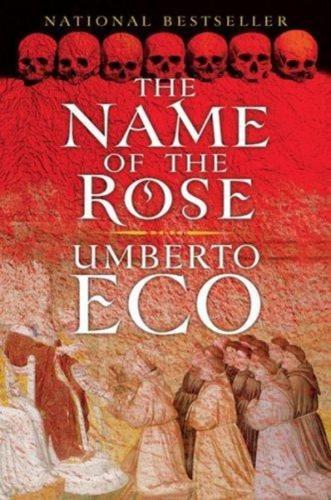
The Name of the Rose
by
Umberto Eco
Published 26 Sep 2006
I found myself even in conflict with Bonagratia, you know?” “But Bonagratia is on our side!” “Now he is, after I spoke at length with him. Then he was convinced, and he protested against the Ad conditorem canonum. And the Pope imprisoned him for a year.” “I have heard he is now close to a friend of mine in the curia, William of Occam.” “I knew him only slightly. I don’t like him. A man without fervor, all head, no heart.” “But the head is beautiful.” “Perhaps, and it will take him to hell.” “Then I will see him again down there, and we will argue logic.” “Hush, William,” Ubertino said, smiling with deep affection, “you are better than your philosophers.
…
But to believe in it we must be sure that the simple are right in possessing the sense of the individual, which is the only good kind. However, if the sense of the individual is the only good, how will science succeed in recomposing the universal laws through which, and interpreting which, the good magic will become functional?” “Yes,” I said, “how can it?” “I no longer know. I have had arguments at Oxford with my friend William of Occam, who is now in Avignon. He has sown doubts in my mind. Because if only the sense of the individual is just, the proposition that identical causes have identical effects is difficult to prove. A single body can be cold or hot, sweet or bitter, wet or dry, in one place—and not in another place.
…
“What an evil idea; those preaching friars must have put it into his mind. ... Ah!” And he shook his head. “But why?” Michael of Cesena returned to this question. “I don’t believe there’s a reason,” William said. “It’s a test he allows himself, an act of pride. He wants to be truly the one who decides for heaven and earth. I knew of these whisperings—William of Occam had written me. We shall see in the end whether the Pope has his way or the theologians have theirs, the voice of the whole church, the very wishes of the people of God, the bishops. …” “Oh, on doctrinal matters he can bend even the theologians to his will,” Michael said sadly. “Not necessarily,” William replied.

The Music of the Primes
by
Marcus Du Sautoy
Published 26 Apr 2004
Indeed, as Bombieri elaborated, ‘When I was in the eleventh grade I studied several of the medieval philosophers. One of them, William of Occam, elevated the idea that when one must choose between two explanations, one should always choose the simpler. Occam’s razor as the principle is called cuts out the difficult and chooses the simple.’ For Bombieri, a zero off the line would be like an instrument in the orchestra ‘that drowns out the others – an aesthetically distasteful situation. As a follower of William of Occam, I reject that conclusion, and so I accept the truth of the Riemann Hypothesis.’ Things came to a head when Bombieri visited the Institute in Bonn, and discussion over tea turned to the Riemann Hypothesis.
…
and Ramanujan 134, 135, 137–41, 143 and the Riemann Hypothesis 150, 160 Lobachevsky, Nikolai Ivanovic 110 logarithms 46–9, 55, 62, 72, 74, 91, 104, 105, 168, 189, 206 Logue, Donal 240 Louis XV, King of France 41 Louis XVI, King of France 41 Lovelace, Ada 190 Lucas, Édouard 205, 206 Lucas-Lehmer numbers 206, 207 m-commerce 248 Manasse, Mark 239 mathematics: a creative art under constraints 34 irrespective of race 184, 199 plunged into crisis 156 pursuit of order 6 Matijasevich, Yuri 198–9, 201 Mendeleev, Dmitri 23, 32, 36–7 Mendelssohn, Felix 75 Mersenne, Marin 40, 41, 44, 93, 204–5 Mersenne primes 17, 206–9, 224, 236 Mertens Conjecture 219, 221–2 Miller-Rabin test 245 Millennium Problems and Prizes 14–16, 33, 242, 246, 250, 252 Miller, Gary 245 Miller, Victor 248 Minkowski, Hermann 108, 114, 116, 211 MISPAR (a computer language) 4 modular arithmetic 9 Monbeig, M. 290 Montgomery, Hugh 254, 255–64, 267, 269–72, 275, 278, 307, 312 Mordell, Louis 258 Motchane, Léon 299, 303 music 77–9, 84, 125 ‘music of the spheres’ 77 of the primes 93–7, 310, 311 Riemann’s 278–9 Nachlass 151–153, 286–287 Napier, Baron John 46 Napoleon Bonaparte 17, 53, 57, 59, 60, 64, 78, 94, 96, 265, 266, 289, 299, 311 Nasar, Sylvia 304 Nash, John Forbes 304 National Bureau of Standards’ Institute for Numerical Analysis 207 National Physics Laboratory, Teddington, Middlesex 191 National Security Agency (NSA) (US) 12, 249 NATO 302 negative numbers 67–8, 68 neutrons 265, 268 Nevanlinna, Rolf 294 Neville, E.H. 139, 140–41 Newman, Max 183, 184, 186, 187, 191, 204,207 Newton, Sir Isaac 119, 123, 269 Noether, Emmy 194 non-communicative space of Adele classes 307 Norwegian Mathematical Society 157 Nth Fermat number 39 nucleus 264–5 Occam’s razor 215 Odlyzko, Andrew 220, 221–2, 221, 253, 254, 270, 271, 272, 275–6, 278, 279, 280, 312 Oppenheimer, Robert 263 parallel lines 109–10 particle accelerators 270 particle physics 4 partition function 143 partition numbers 141–3, 142, 158 Periodic Table of chemical elements 23, 32, 36, 224, 264, 265, 268 Peter the Great 41 physics 74, 84 pi (film) 28 Piazzi, Giuseppe 19 planetary orbits 188 Poincaré, Henri 1, 6 Pomerance, Carl 238–9, 240, 245 Prime Number Conjecture (later Theorem) see under Gauss, Carl Friedrich prime numbers: apparent randomness 5, 6, 7, 9, 47 and cicadas 27–8 definition 5 Fermat’s Little Theorem see under Fermat, Pierre de and Germany’s educational revolution 60 hunting for 38–41 importance to mathematics 5 infinity of 36, 76, 81, 106–7, 163, 205, 310 largest known 204, 205, 207, 208, 209 list of 5–6, 5, 22, 23, 24, 37, 199 and logarithms 46–9, 55, 62, 72, 74, 104, 105, 168, 206 and longevity 311–12 masters of disguise 130 music of 93–7, 310, 311 Riemann’s formula for the number of 89, 90–91, 90 story of primes as a social mirror 34 tables of 47–8, 48, 205–6 an unanswered riddle 314 probability theory 165, 166, 272, 313 Problem of the Bridges of Königsberg 43, 44, 106 Project Orion 263 protons 265, 268 Proust, Marcel 255 Prussia 59 Pryce, Maurice 187 Ptolemy I 36 Putnam, Hilary 198 Pythagoras 67, 77, 78, 93 Pythagoras’ theorem 67 quadratic sieve 238–9, 240 quantum billiards 275–80, 277, 282, 288 quantum chaos 279, 280, 281, 283, 298, 307, 311 quantum mechanics 279 quantum physics 4, 117, 166, 263, 264, 266, 267, 269, 273, 276, 280, 284, 286, 296, 305, 306, 307,311, 313 Rabin, Michael 245 Rademacher, Hans 158 Ramanujan, Srinivasa 27, 132–47, 133, 157–8, 164, 245, 262, 294 Ramanujan’s Tau Conjecture 16, 146 Rameau, Jean-Philippe 77 real numbers 68, 68, 69, 85 Redford, Robert 240 Reid, Legh Wilber 102 Ribenboim, Paulo 245 Riemann, Bernhard (main references) 63, 286–7 creates the Hypothesis 9 and Dirichlet 168 education 61–5, 72–5, 84 formula for number of primes 89, 90–91, 90 geometry 74, 113, 289, 307 imaginary numbers 66, 84, 88, 251, 286, 287 influences 61–2, 63, 66, 75–6, 82, 132 mathematical looking-glass 9, 90, 99, 167, 168 notebook 153–4 order out of chaos 97–101 paper on prime numbers 82–3, 84, 96, 100, 103, 106, 149, 150, 153 perfectionism 61, 82, 101 rescued notes 101, 151 Siegel discovers his secret formula 152–3, 213 succeeds Dirichlet 83, 100 visits Italy 100–101 and zeta function 81–2, 84–7, 137 Riemann, Elise (née Koch) 100, 101, 151 Riemann Hypothesis 33, 166, 176 assumed to be true 130, 131, 143 Bombieri’s interest see under Bombieri Cohen and 202 and commercial interest 11, 12 Connes’ work 3, 4, 288–289, 305, 307–9 Hilbert and 1–2, 114, 115, 243 importance 138–9 Landau’s criticism 149–50 a Millennium Problem 14, 15, 309–10, 312 probabilistic interpretation of 167 proof issue 4, 5, 9–10, 11, 14, 17, 18, 114–15, 159–60, 171–5, 178, 181, 182, 183, 188, 192, 196, 204, 212–16, 218–19, 222, 243, 245, 279, 281, 287, 288, 290, 294,297, 298, 301–2, 304, 307–10, 312,313 published 83 Selberg on 159–60, 173–4 Stieltjes’ claim 103 Rivest, Ron 11, 227–31, 229, 233–6, 238, 239, 242, 244, 249–50 Robinson, Julia 193–9, 195, 201, 202, 204, 205 Robinson, Raphael 196, 197, 207 Rota, Gian-Carlo 172 Royal Society 145, 189, 190 Computing Laboratory 191 RSA 12, 230, 231, 232, 235–9, 241–4, 246–50, 252, 253 ECC Central 249, 250 RSA 129 challenge 236–7, 239 RSA 155 challenge 240 Russell, Bertrand 128, 136, 138, 144, 178 Sacks, Oliver 8, 9, 39 Sagan, Carl 1, 7–8, 9, 28, 271, 280 Sarnak, Peter 127, 224, 281–3, 287, 296, 298, 307, 308, 309 Saxena, Nitin 245 Scandinavian Congress of Mathematicians (Copenhagen, 1946) 159 Schmalfuss (director of the Gymnasium Johanneum) 60–61, 63 Schneier, Bruce 242 Schoenberg, I.J. 154 Schrödinger, Erwin 284 Schwartz, Laurent 172 Science Museum, London 189 Second World War 154, 155–6, 160, 174, 175, 190, 192, 225, 241, 263, 289, 293–4 Selberg, trace formula 17 Selberg, Atle 16, 156–60, 157, 162, 167–74, 176, 177, 212–13, 261, 262, 263, 285, 288, 294, 295, 301–2, 307–8, 311–12 Severi, Francesco 296 Shamir, Adi 11, 228–9, 229, 230, 236, 238, 249 Shimura, Goro 298 Siegel, Carl Ludwig 148–9, 151–4, 156,188,213,251,297 Siegel zero 17 sieve of Eratosthenes 17, 23, 24, 239 Silverman, Joseph 250, 252, 253 sine function 72 sine waves 95, 96, 188 Skewes, Stanley 129, 130 Skewes Number 129 Slowinski, David 207, 208 Snaith, Nina 284, 285 Sneakers (film) 240, 242 Snow, C.P. 136–7, 147 space, as curved and non-Euclidean 128 spectroscopy 88, 224 Stalin, Joseph 293 Standards Western Automatic Computer (SWAC) 207 Stark, Harold 220, 221 Stieltjes, Thomas 102–5 string theory 306 super-symmetric fermionic-bosonic systems 4 Survive 303 Swinnerton-Dyer, Sir Peter 127, 250–52 Tarski, Alfred 197 te Riele, Herman 217, 218, 222 Teichmüller, Oswald 155 Thomson, J.J. 128 tides 188–9 Titchmarsh, Ted 188, 190, 192 triangular numbers 24–5, 26, 26, 29, 32, 52 trivial zeros 98 Trinity College, Cambridge 122–4, 124, 127–8, 144 Truman, Harry 172 Turán, Paul 169, 170 Turing, Alan 175–7, 177, 227 artificial intelligence 176 at Bell Laboratory 219 and the Enigma code 175, 190–91, 205, 206 and Hardy 187, 188 death 192 homosexuality 192 and the Riemann Hypothesis 175, 188, 191, 212 Turing machines 182–93, 197, 198, 199, 202–3, 204, 207, 213, 215 twin autistic-savants 8–9, 39 Twin Primes Conjecture 39, 181, 257, 258 uranium 268 van de Lune, Jan 219 Vernon, Dai 271–2 Vijayaraghavan 293, 294, 296 Wagner, Richard 59 Waring’s Problem 116 wave equation 266 Weber, Heinrich 154 Weber, Wilhelm 73–4 Weil, André 31, 180, 288–300, 293, 302, 305, 306, 308 Weyl, Hermann 160, 171 Wigner, Eugene 268–9, 270 Wiles, Andrew 4–5, 12–17, 29, 34, 115, 118, 171, 248, 251, 252, 282, 298, 313 William of Occam 215 Wittgenstein, Ludwig 128 Wolfskehl, Paul 15, 118 Wolfskehl Prize 15, 136 Woltman, George 208 Zagier, Don 213–19,214, 217, 252, 278 Zeilberger, Doron 309 zeta function 76–82, 84–6, 86, 88, 89, 128, 137, 144, 153, 158, 167, 168, 190, 220, 251, 258, 273, 283, 295 P.S. Ideas, interviews & features … About the Author * * * Portrait of Marcus du Sautoy Snapshot Top Ten Favourite Books About the Book * * * A Critical Eye Jerzy Grotowski Read On * * * If You Loved This, You’ll Like … Find Out More Bookshop About the Author Portrait of Marcus du Sautoy By Josh Lacey WHEN I MEET Marcus du Sautoy I take along one of the books which he discusses in The Music of the Primes and recommends in his ‘top ten’.
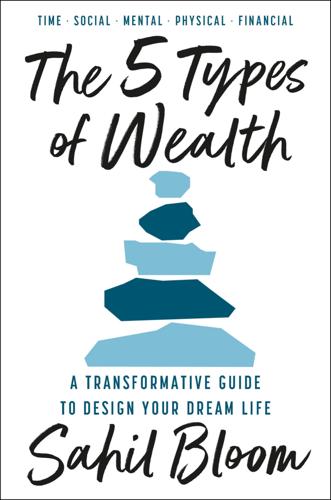
The 5 Types of Wealth: A Transformative Guide to Design Your Dream Life
by
Sahil Bloom
Published 4 Feb 2025
The Life Razor In the study of philosophy, the term razor denotes any principle that allows you to quickly remove unlikely explanations or avoid unnecessary steps. It allows you to metaphorically shave away unneeded explanations or actions. Today, the term is broadly applied as a rule of thumb that simplifies decision making. There are many well-known razors: Occam’s razor, named for fourteenth-century philosopher William of Occam, states that when weighing explanations for something, the one with the fewest necessary assumptions is generally the correct one. The simplest explanation is the best one. Simple is beautiful. Hanlon’s razor, a tongue-in-cheek adage stating that one must never attribute to malice that which is adequately explained by stupidity.
…
Bureau of Labor Statistics, 60 us listening, 184 V vagus nerve stimulation, 286 Vaillant, George, 136–37 value, creating and receiving, 345–46 value-aligned rooms, 182–83 Van Valen, Leigh, 71 Vanderbilt, Cornelius, 314 vegan diet, 273 Venkatesh, Rohan, 147–49 Vikings, 68 Vishnu (god), 211 visualization exercise, 9, 32 vital signs, checking, 276 vitamins and minerals, 284, 300 Vitruvian Man (Leonardo da Vinci), 268–69 VO2 max, 296 Vonnegut, Kurt, 313, 318 W wake time, 292, 294, 302 Waldinger, Robert, 137–38, 150, 164 Walker, Matthew, 285 walking, 191, 250–51, 294, 302 warrior archetype, 270–71 Watanabe, Ken, 367 water clocks, 69 water intake, 284, 291, 293–94, 298 Wealth of Nations, The (Smith), 322 Wealth Score, 30–33, 85, 124–25, 159, 199–200, 227, 256–57, 288, 307–8, 337–38, 363–64, 368 What I Wish I Knew When I Was 20 (Seelig), 245 wheel of time (kalachakra), 68 Whillans, Ashley, 74 Why We Sleep (Walker), 285 Wilkinson, Andrew, 45 William of Occam, 36 Winfrey, Oprah, 221 work-life balance, 145 World Cup (2022), 46–47 writing invention of, 322 as meta-skill, 349 Writing Life, The (Dillard), 234 WSJ-NORC poll, 153 Y Yerkes, Robert, 304 Yerkes-Dodson Law, 304 Yes-Damn Effect, 112 yoga, 281 you listening, 184 Z Zauberman, Gal, 112 zone 2 training, 280, 296 zone 5 training, 280, 296 Zoroastrianism, 68 Zuckerberg, Mark, 315 Zurvan (god), 68 A B C D E F G H I J K L M N O P Q R S T U V W X Y Z About the Author Sahil Bloom is an inspirational writer and content creator, captivating millions of people every week through his insights and biweekly newsletter, “The Curiosity Chronicle.”
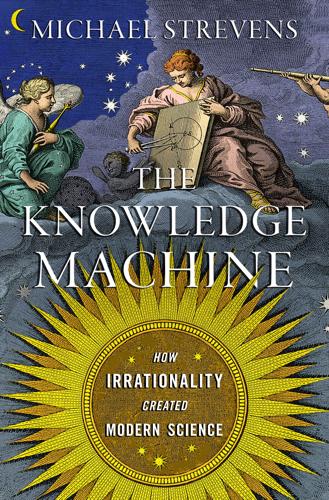
The Knowledge Machine: How Irrationality Created Modern Science
by
Michael Strevens
Published 12 Oct 2020
Montague has posited two kinds of things, heat itself and heat radiation, each popping up to do the job it is good for and then conveniently metamorphosing into the other when that’s what’s needed instead. At the very least, Montague seems to be violating the old methodological dictum “not to posit two entities when one will do”—usually, in honor of the medieval philosopher William of Occam, called “Occam’s razor.” It is hardly unreasonable for Capulet to threaten Montague with a close shave. This is one more example, then, of the essential subjectivity of scientific reasoning: the wisdom of Montague’s willingness to postulate radiation—a whole new way that heat might be shipped around the universe—depends on your perspective.
…
V., 246 Wegener, Alfred, 54–58 Weinberg, Steven, 207–8, 256–58 Western Europe normalization of public/private divide, 251 religious freedom in, 245–46 as seat of Scientific Revolution, 242–52 Westfall, Richard, 48 Westphalia, Peace of, 246–47 Whewell, William career of, 174–75 and compartmentalization, 188 and fossil record, 175–77, 204–5 history of the sciences, 175–83 and iron rule, 191–92, 204–5 Whyte, William, 25–26 Wigner, Eugene, 227 Wilberforce, Bishop Samuel “Soapy Sam:, 76 Wilczek, Frank, 227, 265 William of Occam, 92 Willingham, Todd, 66–67 Wilson, E. O., 264, 265, 275 Woolgar, Steve, 60–61, 68 World, The (Descartes), 130–31 worldview interpretation and, 289 paradigm and, 25, 30 World War I (Great War), 14, 42, 156 Wright, Joseph, of Derby, 276–77 xi particles, 232, 234, 314n Zimring, James, 63 zoophytes, 218 Zuckerman, Solly, 21 ABOUT THE AUTHOR Michael Strevens is Professor of Philosophy at New York University, where since 2004 he has taught and thought about the nature of science, complex systems, the psychology of philosophy, the role of physical intuition in scientific discovery, and the nature of explanation and understanding, among other things.
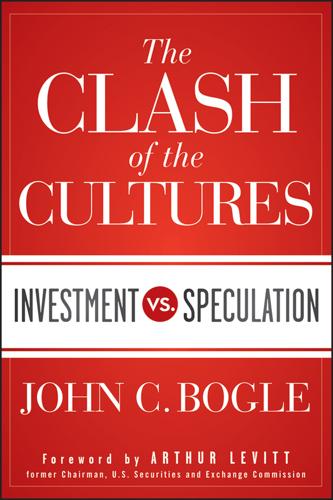
The Clash of the Cultures
by
John C. Bogle
Published 30 Jun 2012
Malkiel also issued a challenge for someone to start “a mutual fund that simply buys the hundreds of stocks making up the market averages.” Alas, I didn’t read his book until the early 1980s. 2 My thinking has long been informed by a fifteenth-century maxim known as Occam’s Razor (after English philosopher Sir William of Occam): When there are multiple solutions to a problem, pick the simplest one. 3 That high cost was justified by a Wells Fargo spokesperson because “we (the manager) can make a lot of money. The fund is our cash cow.” 4 The typical investor owns about four equity mutual funds; the typical fund manager lasts for five years.
…
While Grinold and Kroner failed to mention my 1991 publication that introduced essentially the same methodology more than a decade earlier, Professor Javier Estrada of the IESE Business School was extremely gracious in this regard. In his article from the journal Corporate Finance Review, “Investing in the Twenty-First Century: With Occam’s Razor and Bogle’s Wit,” he concluded “Sir William of Occam taught us to focus on the essentials, and Bogle showed us how to apply that lesson to forecasting the long-term returns of stock markets.4 Taking a cue from both, I evaluate the forecasting ability of two simple models, and show that they are surprisingly successful.” Also generous in recognizing my methodology are Princeton professor Burton G.
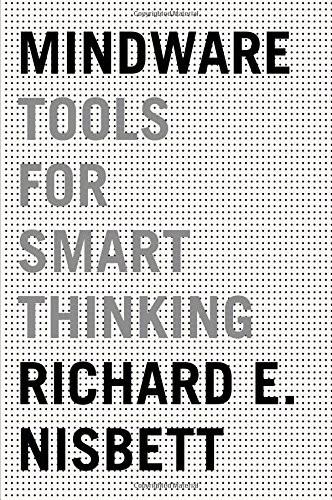
Mindware: Tools for Smart Thinking
by
Richard E. Nisbett
Published 17 Aug 2015
Stich and his colleagues have shown that intuitions about the nature of the world, what one can call knowledge, and what one regards as moral can be so diverse across cultures and from individual to individual that it often makes no sense to appeal to a chimera called “our intuitions.”1 15. KISS and Tell We consider it a good principle to explain the phenomena by the simplest hypothesis possible. —Claudius Ptolemy It is futile to do with more things that which can be done with fewer. —William of Occam To the same natural effects we must, so far as possible, assign the same causes. —Isaac Newton Whenever possible, substitute constructions out of known entities for inferences to unknown entities. —Bertrand Russell What counts as knowledge, and what qualifies as an explanation, are two of the main questions discussed in this book.
…
Smith, Adam social conflict social desirability bias social facilitation effect social psychology; context in; experiments in; founding of; fundamental attribution error in; microeconomics and; in political campaigns; reality in; social influence in Social Security Social Text Socrates Socratic dialogue Sokal, Alan South Carolina Soviet Union Speed (movie) Spender, Stephen Sperber, Dan spreading activation standard deviation (SD); for IQs; for observations Standard & Poor’s Stanford University; Graduate School of Business statistical dependence statistical heuristics statistical independence status quo stereotypes Stich, Stephen stimuli; incidental Stoic philosophers Stoler, Ann Structure of Scientific Revolutions, The (Kuhn) Subaru subliminal perception and persuasion Summers, Lawrence sunk costs Sunstein, Cass Sweden syllogisms Talmudic scholars Tanzania Tao Tennessee Texas text, reality as Thaler, Richard theology Thorndike, Edward Time magazine Towers of Hanoi problem Toyota tragedy of the commons training, transfer of traits; behaviors related to; correlations for; role-related “Transgressing the Boundaries” (Sokal) Triplett, Norman Turkish language Tversky, Amos Twain, Mark uncertainty unconscious mind; rational Unitarians United States; academic performance in; allergies in; autism diagnosis in; crime prevention programs in; death penalty in; dialectical thinking in; health issues in; history teachers in; homicide versus suicide deaths in; incarceration rate in; income ranges in; life insurance coverage in; manufacturing in; minority advancement in armed forces of; national election polls in; oil reserves of; per capita GDP in; pragmatism in; product choice in; Social Security program in; subjectivist view in; vaccination in; values and beliefs in vaccination validity; of arguments; reliability and value: expected; of human life; monetary, in cost-benefit analysis; sentimental; of sunk costs and opportunity costs Van Buren, Abigail (Dear Abby) variables; continuous; control; correlation of; economic; outcome; predictor; regression to the mean of; see also dependent variables; independent variables Varnum, Michael Venn, John Venn diagrams Vermont Volkswagen von Neuman, John Wall Street Journal, The Washington, University of Washington State Institute for Public Policy Western culture, difference between Eastern culture and, see cultural differences West Germany What Works Clearinghouse Whitehead, Alfred North William of Occam Wilson, Timothy within designs World Economic Forum Zajonc, Robert Zen Buddhism Zeno Zhang, Yitang Zipcars A NOTE ABOUT THE AUTHOR Richard E. Nisbett is Distinguished University Professor of Psychology at the University of Michigan and one of the world’s most respected psychologists.
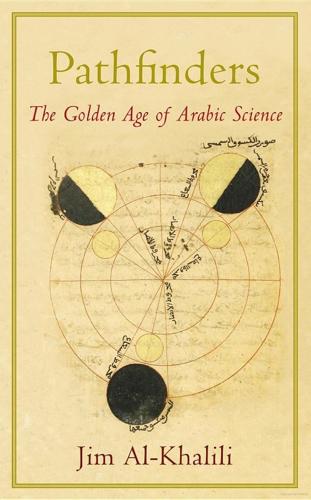
Pathfinders: The Golden Age of Arabic Science
by
Jim Al-Khalili
Published 28 Sep 2010
The light could come directly from the object if it is luminous, or be reflected from it if it is not. Thus, the rays from the eye are an unnecessary complication and should be dropped. In this way, he used a form of Occam’s Razor, the dictum that a phenomenon should be explained using as few assumptions as necessary, attributed to the fourteenth-century English philosopher William of Occam. But Ibn al-Haytham went further than philosophical arguments, for he did something quite astounding. He used Euclid’s geometrical model of the emission theory and applied it to the intromission theory. Now, it is rays emanating from the object that spread out radially in straight lines. In this way, he ‘mathematized’ his theory of vision.
…
It would be wrong to dismiss completely any form of original scientific scholarship in Europe during the Islamic golden age, for there are always isolated pockets of intellectual activity and excellence wherever and whenever one looks in world history. Two notable lights and original thinkers who shone in the medieval darkness were the Italian Thomas Aquinas (c. 1225–74), and the Englishman William of Occam (c. 1288–1347). However, there were very few other Christian scholars whose achievements could rival their Muslim counterparts until the end of the fifteenth century and the arrival of Renaissance geniuses such as Leonardo da Vinci. By that time, European universities would have contained the Latin translations of the works of all the giants of Islam, such as Ibn Sīna, Ibn al-Haytham, Ibn Rushd, al-Rāzi, al-Khwārizmi and many others.
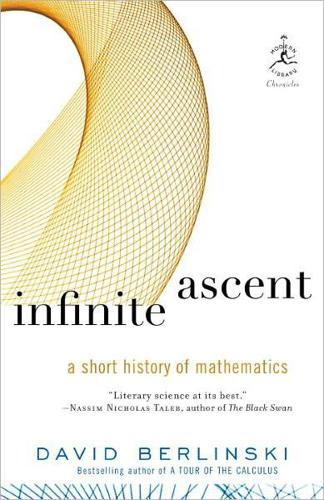
Infinite Ascent: A Short History of Mathematics
by
David Berlinski
Published 2 Jan 2005
But the Romans possessed no mathematical gift whatsoever, their incompetence as striking as it would have been had classical Greek culture given out directly to modern-day Rwanda or the Sudan. Mathematical curiosity died in the Roman Empire and it stayed dead in the Christian West for more than one thousand years. There were great theologians and philosophers, to be sure: the Church fathers, the Venerable Bede, Anselm, Abélard, Albertus Magnus, Thomas Aquinas, Duns Scotus, William of Occam; but no one on fire with the Pythagorean rapture, only men prepared indifferently to sift its ashes. In the great Moslem Empire that from the eighth century AD to the middle of the thirteenth century stretched from Spain in the west to the borders of India in the east, things were otherwise.
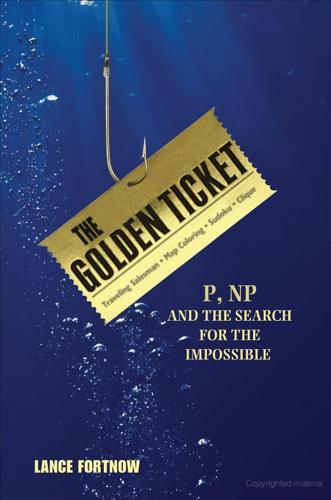
The Golden Ticket: P, NP, and the Search for the Impossible
by
Lance Fortnow
Published 30 Mar 2013
Combined DNA Index System (CODIS), 25–26 Vardi, Moshe, x vertex cover problem (very cozy group): approximating, 101–4, 102, 103; hardness of, 97, 97–99, 98 video games, automated creation of, 25 voice recognition, 23 Wallach, Eli, and Kevin Bacon, 31–32 Watson (computer), 156–57 weather prediction, 16 Wiles, Andrew, 7, 110 William of Occam, 19–20 Williamson, David, 45 wire, electric charge carried by, 113–14 workers, effect of P = NP on, 27 World War II, 125–26 Xbox, 25 Yablonsky, Sergey, 78, 79–80 zero-knowledge proofs, 131; for Sudoku, 130–36
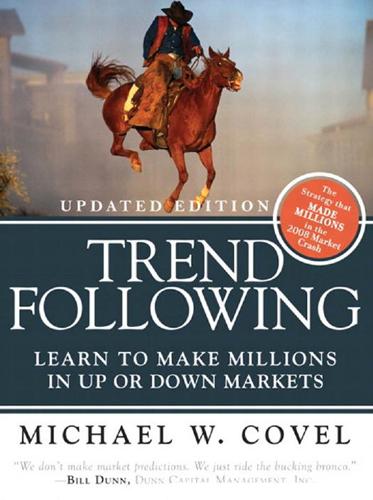
Trend Following: How Great Traders Make Millions in Up or Down Markets
by
Michael W. Covel
Published 19 Mar 2007
Yet, even when all unfit hypotheses are thrown out, several might remain, in some cases reaching the same end, but having different underlying assumptions. To choose among similar theories, scientists use Occam’s razor. Occam’s razor is a principle attributed to logician and Franciscan friar William of Occam. The principle states that entities must not be multiplied unnecessarily. In its original Latin form, Occam’s razor is “Pluralitas non est ponenda sine neccesitate.” This underlies all scientific modeling and theory building. A common interpretation of the principle is that the simplest of two or more competing theories is preferable.7 Occam’s razor does not guarantee that the simplest solution will be correct, but it does focus priorities. 213 We could still imagine that there is a set of laws that determines events completely for some supernatural being who could observe the present state of the universe without disturbing it.
…
Kirk T., 214 Vician, Thomas, Jr., 40, 66, 243, 272 volatility, 99-105 measuring, 180 risk versus, 104 upside volatility, 102-105 Voltaire, xvii von Metternich, Klemens, 270 von Mises, Ludwig, xviii, 3, 97, 99, 202, 264 Wachtel, Larry, 235 Waksman, Sol, 253 Watts, Dickson, 92 Weaver, Earl, 182 web sites, 397 Weill, Sandy, 156 Weintraub, Neal T., 233 Wells, Herbert George (H.G.), 225 Welton, Patrick, 15 what to trade, 254-256 when to buy/sell, 259-262 whipsaws, 263 Wigdor, Paul, 126 Wilcox, Cole, 268, 307 William of Occam, 213 Williams, Ted, 261 winners Long-Term Capital Management (LTCM) collapse, 156-164 losers versus, 123-125 “The Winners and Losers of the Zero-Sum Game: The Origins of Trading Profits, Price Efficiency and Market Liquidity” (white paper) (Harris), 115 winning investment philosophies, 4-6 winning positions, when to exit, 263-265 Winton Capital Management, 29, 372-373 Winton Futures Fund, 230 “The Winton Papers” (Harding), 31 Wittgenstein, Ludwig, 395 Womack, Kent, 241 The World is Flat (Friedman), 143 WorldCom, 241 Wright, Charlie, 244 Yahoo!
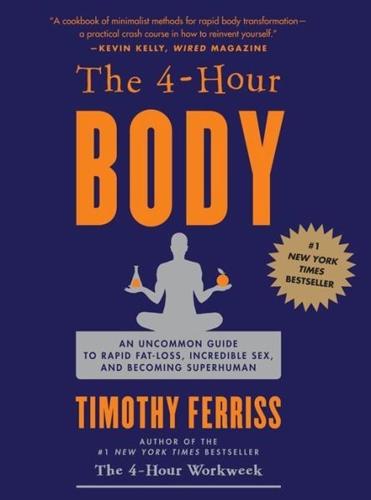
The 4-Hour Body: An Uncommon Guide to Rapid Fat-Loss, Incredible Sex, and Becoming Superhuman
by
Timothy Ferriss
Published 1 Dec 2010
Even with chicken breasts, poor Casey would have also gained an unfortunate 189 pounds of fat at the same time, according to the same math, leaving him looking like Cartman on “Weight Gain 4000.” 15. 1.7 g/kg * 56.7 kg * 80%. OCCAM’S PROTOCOL I A Minimalist Approach to Mass It is vain to do with more what can be done with less. —William of Occam (c. 1288–1348), “Occam’s Razor” 100 FEET OFFSHORE, MALIBU, CALIFORNIA I was sitting on my surfboard 20 feet to the side of Neil Strauss, bestselling author of The Game. The afternoon sun was shimmering off the rolling sets of blue water, and he was catching wave after wave. Me, not so much.
…
deadlift, 27.1, 32.1, 32.2 and endurance free weights frequency getting started goals of, 17.1, 32.1 interim phase, 33.1, 33.2 Janda sit-up leg press machine options, 17.1, 17.2 maximal strength missed reps missed workouts Neil’s workout, 17.1, 17.2, 17.3, 18.1 Occam’s feeding, 17.1, 18.1 Occam’s frequency Occam’s prescriptions Occam’s Protocol pull-down rules for safety in set-up and technique shoulder press speed of lifting squat starting weights sumo deadlift ten-rep rule, 32.1, 32.2 torture twist training protocol TUT in under 10 seconds warm-ups workout buddy workout timing stretching stride rate Strossen, Randall J., 14.1, 17.1 sucrose sugar substitutes, 8.1, 9.1 Sulis, Talulah, 19.1, 19.2, 19.3, 19.4 sun, exposure to Superhuman, Effortless superoxide dismutase (SOD) supine groin progressive, 25.1, 25.2, 25.3 supplements author’s regimen and insulin sensitivity in strength training for vegetarians, 47.1, 48.1 Swaraj Sweet Potatoes (recipe) swimming author’s tips breathing gear getting started stroke length Total Immersion, 34.1, 34.2 Szent-Gyorgyi, Albert T TA-65 (telomerase activator) Tabata protocol, 30.1, 31.1 Takeuchi, Shinji, 34.1, 34.2 Taleb, Nassim, 43.1, 43.2 Tapalla, Rudy Tarahumara Indians Tate, Dave, 30.1, 33.1 Taubes, Gary Taylor, Jeff tea, 9.1, 9.2, 10.1, 10.2 TEF (thermal effect of food) telomerase activators Tempeh Tacos (recipe) tensegrity testing, 40.1, 48.1 BioPhysical BodPod Cardio Lipid Panel Comprehensive Blood Panel DEXA for fertility Food Allergies Genetic Insights Inflammatory Markers insurance coverage, 40.1, 48.1 Liver Enzymes repeating SpectraCell Stool Analysis timing of Urine Toxic Metals ZRT at-home Vitamin D kits testosterone: and cell phones exogenous levels of, 21.1, 46.1 and nuts and pheromones production of Protocol #1 for Protocol #2 for and SHBG and steroids and women testosterone enanthate tetracycline T-handle theobromine theophylline thermodynamics thermogenics, 8.1, 46.1 Thomas, Kurt Thompson, Clive three-cone drill Thun, Michael thyme TI (Total Immersion), 34.1, 34.2 TI (total inches), 5.1, 6.1 tibialis anterior time under tension (TUT) tomatoes Torine, Jon, 27.1, 27.2 Torres, Dara Total Immersion (TI), 34.1, 34.2 total inches (TI), 5.1, 6.1 transfer Traumeel travel, and diet, 8.1, 47.1 Trevor triglycerides Tsatsouline, Pavel, 32.1, 32.2 tuna TUT (time under tension) Twain, Mark Tyler, Alison U ultrasound, 5.1, 5.2 Uno, Caol urine testing UV exposure V Valsalva Technique vampire myth Vanilla Walnut Protein Cookies (recipe) Van Voorhies, Wayne Veblen, Thorstein, 42.1 vegetables, 7.1, 8.1, 8.2 vegetarians: lacto-ovo mistakes of plant-based diet, 47.1, 48.1 and protein, 8.1, 47.1, 48.1 questions and concerns supplements for, 47.1, 48.1 and travel use of term Vergel, Nelson Vesper, scratches from vests, weighted Vetterlein, Ray Viator, Casey, 2.1, 16.1 vibrators vinegar vitamin A, 46.1, 46.2, 46.3 vitamin C vitamin D, 21.1, 46.1, 46.2 vitamin E vitamin K(2) vitamins, fat-soluble W waist-to-hip ratio (WHR) WakeMate walking, timed wall presses, 9.1, 9.2, 9.3 WAT (white adipose tissue) water: drinking gulping retention of thermal load of water weight Wegener, Alfred weight: fluctuations in gain (recipe) metric conversion Wells, H. G. West, Mae WHI (Women’s Health Initiative) WHR (waist-to-hip ratio) Wie, Michelle, 27.1, 27.2 Wilde, Oscar William of Occam Williams, Ted, 35.1, 37.1 Wilson, Clyde wine, 7.1, 8.1 and sleep Wired WOE (ways of eating) Wolfer, Lee, 1.1, 25.1, 25.2 women: fertility tests and menstruation, 8.1, 8.2, 21.1 orgasms of and testosterone Women’s Health Initiative (WHI) Wooden, John Y Yates, Dorian, 17.1, 17.2, 33.1 yerba mate tea yogurt yo-yo dieting Z Zaru, Nathan zdeel Zeiger, Roni Zeisel, Steven Zeo, 23.1, 23.2 Zepeda, Lydia Zobrist, Ben, 35.1, 35.2 ZRT at-home Vitamin D kits ABOUT THE AUTHOR TIMOTHY FERRISS, nominated as one of Fast Company’s “Most Innovative Business People of 2007,” is the author of the #1 New York Times, Wall Street Journal, and BusinessWeek bestseller The 4-Hour Workweek, which has been published in 35 languages.
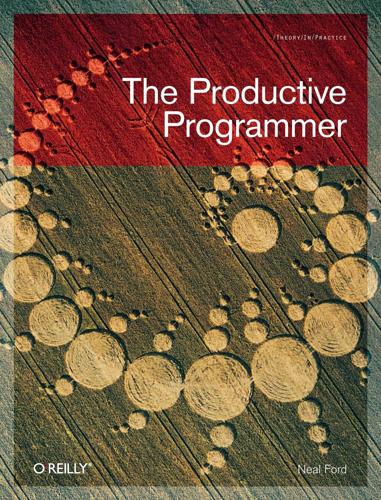
The Productive Programmer
by
Neal Ford
Published 8 Dec 2008
For example, you may think you need a data warehouse, but the amount of complexity it adds to the overall problem isn’t worth the benefits it might provide. You can never kill all accidental complexity with software, but you can continually try to minimize it. NOTE Maximize work on essential complexity; kill accidental complexity. Occam’s Razor Sir William of Occam was a monk who disdained ornate, elaborate explanations. His contribution to philosophy and science is known as Occam’s Razor, which says that given multiple explanations for something, the simplest is the most likely. Obviously, this ties in nicely with our discussion of essential versus accidental complexity.
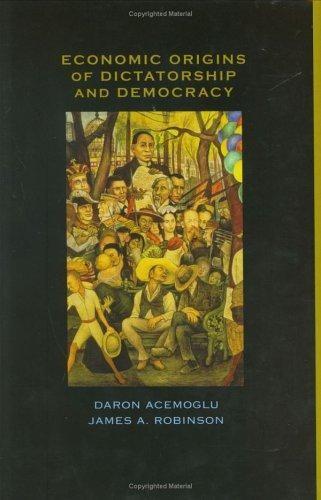
Economic Origins of Dictatorship and Democracy
by
Daron Acemoğlu
and
James A. Robinson
Published 28 Sep 2001
Democracy versus Nondemocracy At the outset, we have to be clear about the precise questions that we tackle and the basic building blocks of our approach. In building models of social phenomena, an often-useful principle is the so-called Occam’s razor. The principal, popularized by the fourteenth-century English philosopher William of Occam, is that one should not increase the number of entities required to explain a given phenomenon beyond what is necessary. In other words, one should strive for a high degree of parsimony in formulating answers to complex questions. Given the complexity of the issues with which we are dealing, we frequently make use of this principle in this book not only to simplify the answers to complex questions but, perhaps even more daringly, to also simplify the questions.
…
See also probabilistic voting exclusions from, 174 Germany’s system of, 67 Latin America, 28 majority, 205 PAP’s influence on, 9 political parties chosen via, 89 preferences, 90 restrictions on, 119, 267 swing voters and probabilistic, 363–367 War of Independence, 69 wealth democracy and, 55 democratic consolidation and, 33, 36 democratization and, 32, 35–37 middle class and, 266 Weimar Republic, 67, 70 welfare elites and Germany and, 200 white(s) ANC’s guarantees for, 210 elites, 13, 15 suffrage of, 4 William of Occam, 16 winners/losers, 91 policies of, 20 Witte, Sergei, 141 workhorse models, 99–113 World Bank, 192 World Politics, 81 World War I, 324 Germany after, 180 globalization in pre-, 41 Sweden and, 68 World War II, 8, 11, 324 Yrigoyen, Hipólito, 5, 352 deposition of, 6 election of, 6 Zaire, 41 ZANU.

The Eureka Factor
by
John Kounios
Published 14 Apr 2015
This knowledge will help you to chart a reliable path to enhanced creativity. The second reason is more theoretical. Science aims for parsimony—never settle for a complicated explanation when a simple one will do the job. This is known as “Occam’s razor,” named after the fourteenth-century English scholar William of Occam. During the 1970s and ’80s, psychologists started to amass substantial evidence for the existence of gradually changing, or “continuous,” thought processes, but little support for truly sudden or “discrete” ones. In the interest of parsimony, some researchers questioned whether sudden cognitive processes exist.
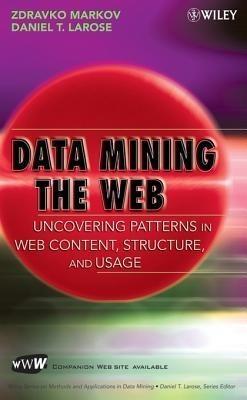
Data Mining the Web: Uncovering Patterns in Web Content, Structure, and Usage
by
Zdravko Markov
and
Daniel T. Larose
Published 5 Apr 2007
Minimum Description Length Principle After all these considerations a natural question comes in mind: Is there any connection between the simplicity of the hypothesis and the quality of the clustering it describes? Interestingly, there is a natural answer to this question, known as Occam’s razor. In the fourteenth century William of Occam formulated a very general principle stating that “Entities are not to be multiplied beyond necessity.” In other words, among several alternatives, the simplest is usually the best choice. Occam’s razor has proven its validity in many areas; however, its application to formal decision making such as clustering and classification requires a formal definition of simplicity.

The 4-Hour Workweek: Escape 9-5, Live Anywhere, and Join the New Rich
by
Timothy Ferriss
Published 1 Jan 2007
—BRUCE LEE The End of Time Management ILLUSIONS AND ITALIANS Perfection is not when there is no more to add, but no more to take away. —ANTOINE DE SAINT-EXUPÉRY, pioneer of international postal flight and author of Le Petit Prince (The Little Prince) It is vain to do with more what can be done with less. —WILLIAM OF OCCAM (1300–1350), originator of “Occam’s Razor” Just a few words on time management: Forget all about it. In the strictest sense, you shouldn’t be trying to do more in each day, trying to fill every second with a work fidget of some type. It took me a long time to figure this out. I used to be very fond of the results-by-volume approach.
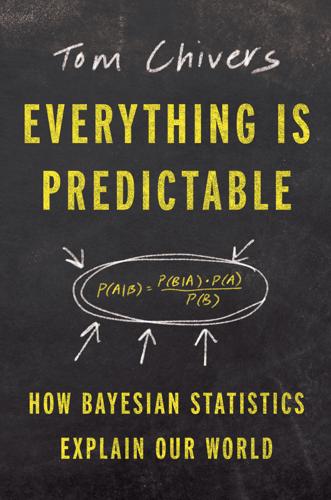
Everything Is Predictable: How Bayesian Statistics Explain Our World
by
Tom Chivers
Published 6 May 2024
J., 19 Simpson, Thomas, 61–64, 73, 77, 261 skill, luck vs., 332–333 Smith, Adam, 72 Smith, Robert, 32 Soal, Samuel, 212–214 soccer, 302 social science, 77–81 Socinians, 29, 31 Socrates, 266–267 software engineering, 113 Solomonoff induction, 205 Soviet Union, 249–251 spam emails, 321–322 spam filters, 322 Spiegelhalter, Sir David, 12, 65–66, 112, 115 Spinoza, Baruch, 92 Spitalfields Mathematical Society, 62 squared error, 217–220 standard deviation (SD), 57–59, 90 Stanford University, 122 Stanhope, Earl of, 32–35, 61 Stapel, Diederik, 117–118 “Statistical Paradox, A” (Lindley), 155 Statistical Science, 24 statistical significance, 98–103, 144–155 statistician’s fallacy, 135–136 Stigler, Stephen, 51, 62, 63, 70, 72, 73, 79 Stopes, Marie, 92 Story, Michael, 256, 261, 262–263 subliminal advertising, 119 Summa de arithmetica, geometrica, proportioni et proportionalità (Pacioli), 39 sum of squared error, 217 superforecasting, 249–264 Superforecasting (Tetlock), 254–255 supervised learning, 216 surprisal, 293 Sutherland, Stuart, 230 Swift, Taylor, 277 Swift Centre forecasting firm, 256 T tails, in statistical significance calculations, 101–102 tennis, 301–302 Tetlock, Philip, 250–256, 258–260 “There’s No Theorem Like Bayes’ Theorem,” 111, 325 Thinking Fast and Slow (Kahneman), 119–120, 230 “Thomas Bayes’s Army (The Battle Hymn of Las Fuentes),” 111 tickling, 303–308 Tilburg University, 118 Times (London), 89 Trinity College, Cambridge, 25 Trump, Donald, 237 trustworthiness, 325 Turing, Alan, 108, 113 Turnbridge Wells, Kent, 28, 32 Tversky, Amos, 227–228, 249 U UCL, see University College London uncertainty aleatory, 160 and Cromwell’s rule, 189–190 decision-making under, 21, 241 drawing inferences from data with, 105 epistemic, 160–162 in predictions, 2–3 underfitting, 219–220 uniformity, 315 uniform priors, 82, 95–97, 162–134 Unitarianism, 29 University College London (UCL), 85, 89, 90, 109 University of Amsterdam, 141 University of California at Berkeley, 242 University of California San Francisco, 311 University of Chicago, 148 University of Sussex, 269 University of Valencia, 110 University of Virginia, 128 University of Waterloo, 24 US National Academies of Sciences, 250 US Supreme Court, 265 utility, 195–203 V vaccine hesitancy, 241 vaccines, belief in, 7 Valencia conferences, 109–115 variance, 58 Venn, John, 96–98 video game aggression research, 124 Vindication of the Rights of Woman, A (Wollstonecraft), 71 von Kármán, Theodore, 92 von Neumann, John, 198–201 vos Savant, Marilyn, 243 W Wagenmakers, Eric-Jan, 141–143, 147, 154, 158, 164–165, 173 Wansink, Brian, 126–127 Ward, John, 27–28, 32 war games, 250 Wason, Peter, 232, 234 Wason’s selection task, 232–236 Wasserman, Larry, 114 Webb, Beatrice, 92 Webb, Sidney, 92 Weiss, Robert, 166, 173 Weldon, Raphael, 89–90 “What a Bayesian World,” 112 “When I’m Sixty-Four,” 121, 123 Whitson, William, 31, 32 “Why Most Published Research Findings Are False” (Ioannidis), 122 Wiggles, the, 123 William of Occam, 204 Winton Centre for Risk and Evidence Communication, 170 Winton Professor of the Public Understanding of Risk, 65 Wittgenstein, Ludwig, 265–266 Wolf Hall (Mantel), 24 Wollstonecraft, Mary, 71 Wolpert, Daniel, 303, 307–308 Wolpert, Lewis, 303* Wordle, 298–300 Y Yale, 110 Yang Hui, 43 Yudkowsky, Eliezer, 182, 185, 191–192, 196, 204 An Imprint of Simon & Schuster, LLC 1230 Avenue of the Americas New York, NY 10020 www.SimonandSchuster.com Copyright © 2024 by Tom Chivers All rights reserved, including the right to reproduce this book or portions thereof in any form whatsoever.
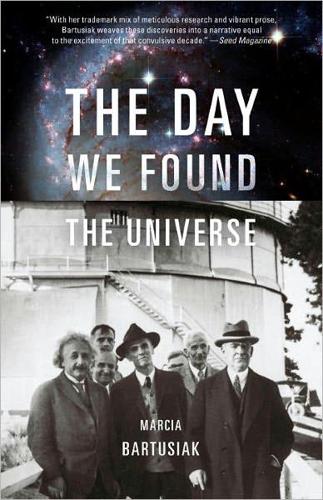
Day We Found the Universe
by
Marcia Bartusiak
Published 6 Apr 2009
But Curtis was championing this idea too early, before the physics could explain it. Many of his fellow astronomers were still fairly skeptical, unwilling to conjure up new celestial creatures willy-nilly. For them “Occam's Razor” prevailed, the long-standing rule of thumb established by the English philosopher William of Occam in the fourteenth century. “Pluralitas non est ponenda sine necessitate,” declared Occam, which can be translated as “plurality must not be posited without necessity.” Best to choose the simplest interpretation over an unnecessarily complex one—unless forced to do otherwise. One type of nova was far more preferable than two.

Sorting Things Out: Classification and Its Consequences
by
Geoffrey C. Bowker
and
Susan Leigh Star
Published 25 Aug 2000
DRGs are used for medical accounting and rely on rearrangements of medical classifications and procedures. This is essentially the same as what organizational theorists call the garbage can approach to decision making. Since the garbage category has a specific meaning here, we have maintained that terminology. The original scientific aphorism, attributed to the medieval philosopher William of Occam, was “thou shalt not multiply entities without necessity. ” It is often interpreted as a value of parsimony in scientific explanation; equally, here, it applies to the design of forms! AIDS presents a similar challenge as a condition, not per se a disease, and equally protean in expression.
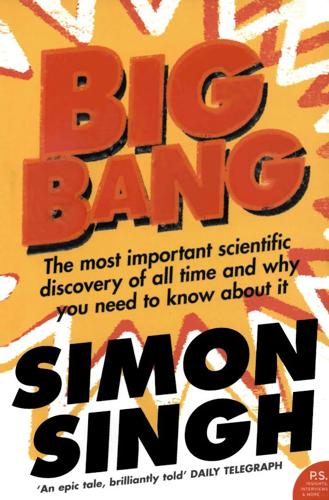
Big Bang
by
Simon Singh
Published 1 Jan 2004
Although Copernicus did toy with epicycles, his model essentially employed a simple circular orbit for each planet, whereas Ptolemy’s model was inordinately complex, with its finely tuned epicycles, deferents, equants and eccentrics for each and every planet. Fortunately for Copernicus, simplicity is a prized asset in science, as had been pointed out by William of Occam, a fourteenth-century English Franciscan theologian who became famous during his lifetime for arguing that religious orders should not own property or wealth. He propounded his views with such fervour that he was run out of Oxford University and had to move to Avignon in the south of France, from where he accused Pope John XII of heresy.

Sorting Things Out: Classification and Its Consequences (Inside Technology)
by
Geoffrey C. Bowker
Published 24 Aug 2000
DRGs are used for medical accounting and rely on rearrangements of medical classifications and procedures. 2 2 . This is essentially the same as what organizational theorists call the gar bage can approach to decision making. Since the garbage category has a specific meaning here, we have maintained that terminology. 2 3 . The original scientific aphorism, attributed to the medieval philosopher William of Occam, was "thou shalt not multiply entities without necessity. " It is often interpreted as a value of parsimony in scientific explanation; equally, here, it applies to the design of forms! 24. AIDS presents a similar challenge as a condition, not per se a disease, and equally protean in expression. 2 5 .
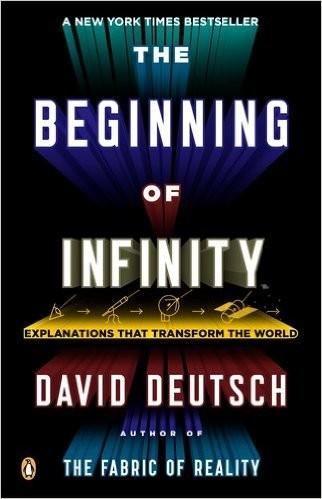
The Beginning of Infinity: Explanations That Transform the World
by
David Deutsch
Published 30 Jun 2011
Good explanations are often strikingly simple or elegant – as I shall discuss in Chapter 14. Also, a common way in which an explanation can be bad is by containing superfluous features or arbitrariness, and sometimes removing those yields a good explanation. This has given rise to a misconception known as ‘Occam’s razor’ (named after the fourteenth-century philosopher William of Occam, but dating back to antiquity), namely that one should always seek the ‘simplest explanation’. One statement of it is ‘Do not multiply assumptions beyond necessity.’ However, there are plenty of very simple explanations that are nevertheless easily variable (such as ‘Demeter did it’). And, while assumptions ‘beyond necessity’ make a theory bad by definition, there have been many mistaken ideas of what is ‘necessary’ in a theory.

The Brilliant Disaster: JFK, Castro, and America's Doomed Invasion of Cuba's Bay of Pigs
by
Jim Rasenberger
Published 4 Apr 2011
What about all the other memos and papers produced by the CIA before and after that assumed and asserted the invasion plan could succeed without overt help from the marines? Don’t they need to be weighed, too? And does it make sense that the CIA, an agency known to jealously guard its turf, seriously intended to hand over the reins of an operation to the Pentagon? What would the fourteenth-century logician William of Occam have to say about this? Occam’s time-tested rule of thumb—popularly known as Occam’s Razor—is that the simplest explanation is usually the best explanation. Applying Occam’s Razor to Drain’s memo, the most obvious interpretation is that its author was not suggesting the CIA would have to “send in the marines” when he referred to a joint agency/DOD action, but rather restating a long-established and widely shared opinion that the CIA needed personnel and logistical support from the Pentagon if the “strike force” operation was to succeed—the sort of “limited additional help from DOD” that Jacob Esterline, Drain’s superior, called for in a report he filed later that fall.